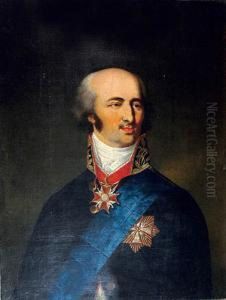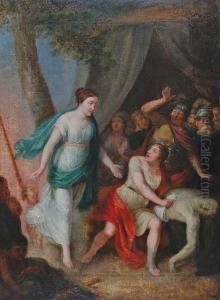Jozef Franciszek Pitschman Paintings
Jozef Franciszek Pitschman, also known as Josef Franz Pitschmann, was a Polish artist born in 1767 in Warsaw, then part of the Polish-Lithuanian Commonwealth. He is primarily known for his contributions as a painter, engraver, and art teacher during the late 18th and early 19th centuries. Pitschman's work was influenced by the artistic trends of his time, including Neoclassicism, which was prevalent in European art during his lifetime.
Pitschman received his initial art education in Warsaw, where he honed his skills in drawing and painting. Seeking to further his art education, he traveled to Dresden, Germany, which was an important center for the arts in Europe. There, he continued his studies and was influenced by the works of renowned artists of the era. His stay in Dresden had a significant impact on his artistic development and style.
Throughout his career, Pitschman was active in various artistic circles and worked on several notable projects. He created portraits, religious scenes, and historical paintings, which were well-received by his contemporaries. His engravings and illustrations also gained recognition for their intricacy and attention to detail. Pitschman's work was characterized by a strong sense of realism and a dedication to capturing the likeness and character of his subjects.
In addition to his work as an artist, Pitschman was also committed to education. He took on the role of an art teacher, imparting his knowledge and skills to a new generation of artists. He was known for his dedication to his students and his desire to foster the growth of the arts in his homeland.
Jozef Franciszek Pitschman's contributions to Polish art were significant, and his works remain a testament to the cultural and artistic heritage of Poland in the late 18th and early 19th centuries. He passed away in 1834, leaving behind a legacy that would influence Polish artists for years to come. His life and work reflect the broader European artistic movements of his time while also showcasing the unique aspects of Polish art and culture.

